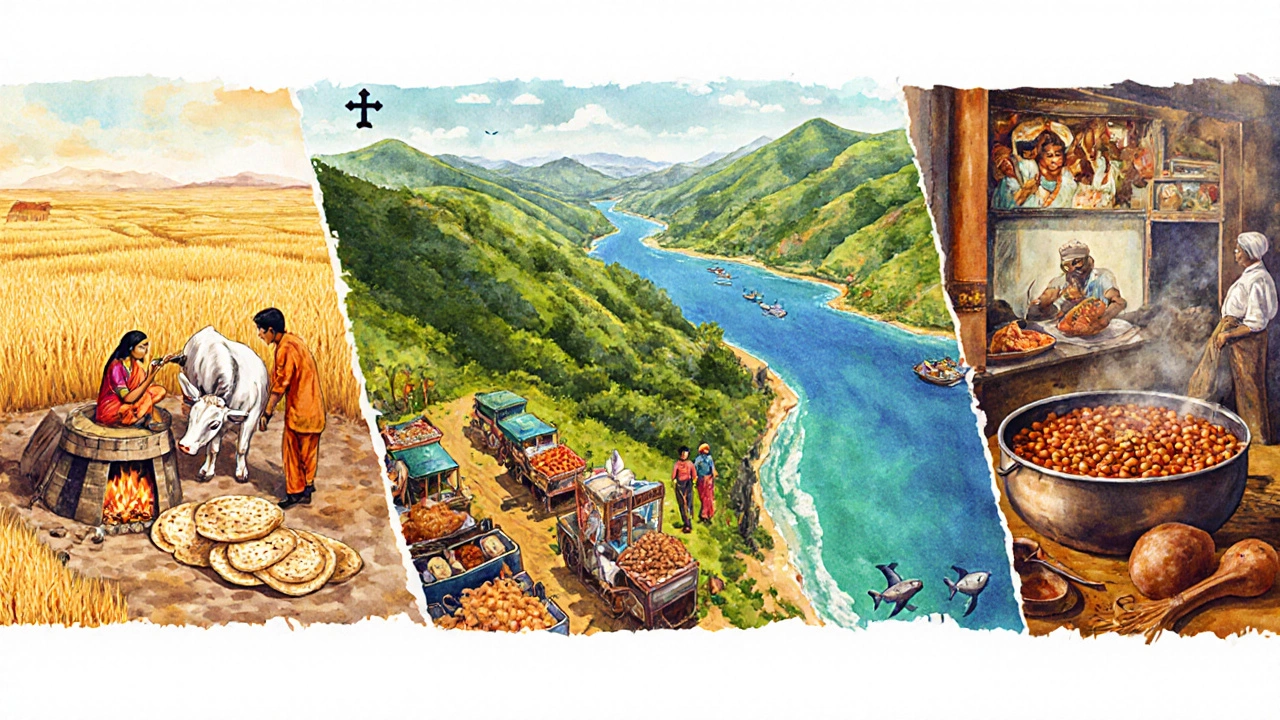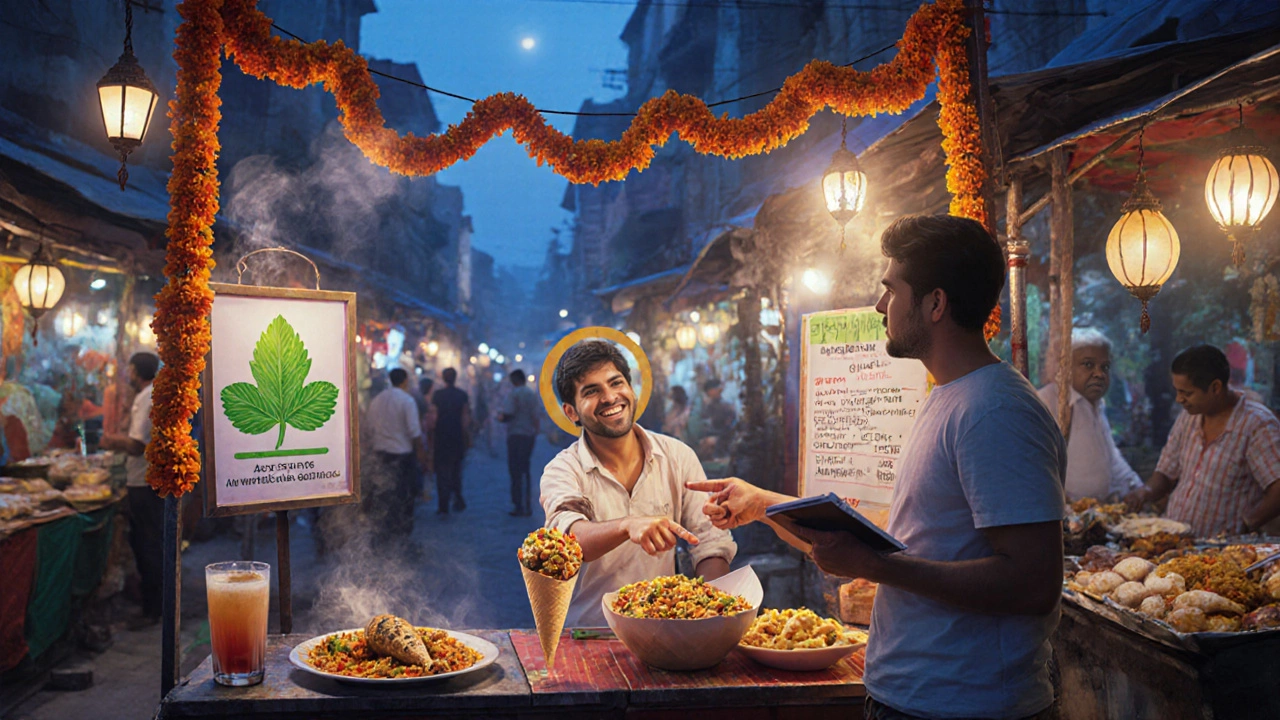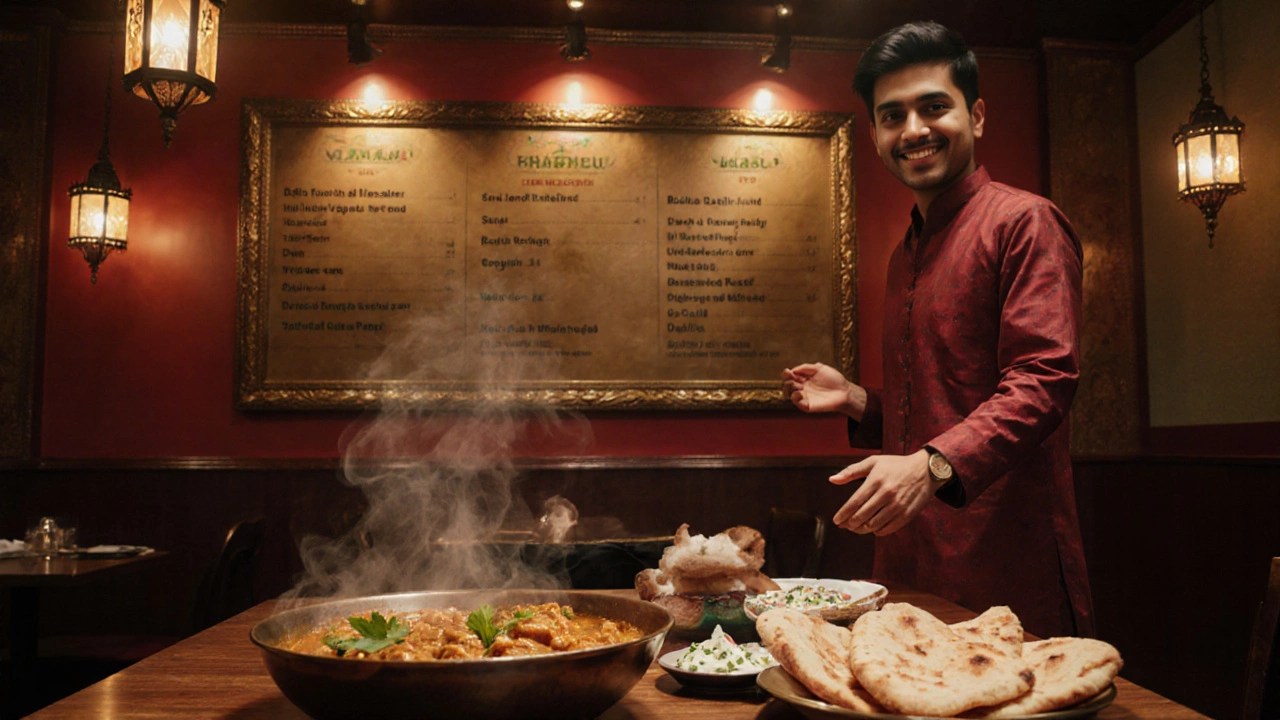Indian Diet Compatibility Calculator
How restrictive are your dietary preferences?
Select restrictions to see how they affect access to authentic Indian dishes
Ever walked into an Indian restaurant and wondered why certain dishes never appear on the menu? The answer isn’t a lack of flavor - it’s a mix of culture, religion, geography, and health trends that shape what most Indians actually skip.
Understanding these hidden gaps helps you avoid awkward ordering mistakes, plan authentic meals, and appreciate the depth of Indian cuisine is a diverse culinary tradition that stretches from the Himalayan foothills to the tropical coasts of Kerala. Below we break down the foods that stay largely off the Indian plate and why.
Surprising Gaps in the Indian Diet
When you think of Indian food, staples like rice, wheat, lentils, and mangoes instantly come to mind. Yet several foods you might expect to see regularly are surprisingly rare.
- Rice is the primary grain in South India, consumed in about 85% of households - but in the North, wheat overshadows it.
- Wheat is the backbone of North Indian breads, eaten by roughly 70% of the population.
- Lentils are a protein‑rich staple, featured in daily meals for over 60% of families.
- Dairy (milk, ghee, paneer) appears in 55% of Indian households, especially in the north.
But the following items barely make the cut:
- Beef - legal restrictions and religious taboos keep it under 2% of consumption.
- Pork - rarely served outside Christian‑majority states like Goa and Kerala.
- Shellfish - coastal regions love it, yet inland it stays under 5% of diets.
- Exotic fruits such as kiwi or dragon fruit - still a novelty, present in less than 1% of households.
These gaps are not random; they’re rooted in centuries‑old practices.
Cultural and Religious Factors
Religion is the strongest driver of food avoidance in India. Hinduism, Islam, Christianity, Sikhism, and Buddhism each dictate distinct dietary rules.
- Beef is almost universally shunned among Hindus (approximately 80% of the population) because the cow is revered as a sacred symbol.
- Pork is avoided by many Muslims (around 15% of the nation) due to Quranic injunctions, and also by certain Hindu sects.
- Alcohol consumption varies: Muslims typically abstain, while many Hindus limit intake during festivals.
These religious taboos create regional flavor maps. For instance, Gujarat, a largely Hindu state, offers an abundance of vegetarian fare, while Kerala’s Christian communities regularly enjoy pork dishes like vindaloo.

Regional Availability and Climate
Geography decides what grows locally and, consequently, what ends up on plates.
- In the arid northwest, wheat and gram (chickpeas) dominate because rice requires more water.
- Coastal states such as West Bengal and TamilNadu have a high share of fish and seafood - yet inland districts consume fish in less than 10% of meals.
- Mountainous regions (Himachal, Uttarakhand) rely on millets and barley, while tropical zones favor mangoes and coconut.
Because of these climatic constraints, foods like avocado or quinoa, common in Western health trends, remain niche imports, present in less than 3% of Indian homes.
Health and Lifestyle Influences
Urbanization and rising health awareness have shifted some traditional patterns.
- Processed meats (sausages, bacon) are scarcely sold; many urban diners view them as foreign and expensive.
- Gluten‑free grains (buckwheat, amaranth) are emerging but still under 5% adoption.
- Vegetarianism, driven by both faith and health, affects about 30% of the population, prompting a lower demand for meat overall.
A 2023 nutrition survey showed that 42% of Indians consider “too much oil” a negative aspect of their diet, leading many to cut back on deep‑fried snacks such as samosas in day‑to‑day meals.
What’s Actually on the Menu? A Quick Comparison
| Food Item | Typical Consumption (% of population) | Main Reason for Low Intake |
|---|---|---|
| Rice | 85 | - |
| Wheat (roti, naan) | 70 | - |
| Lentils (dal) | 60 | - |
| Beef | 2 | Religious taboo (Hinduism) |
| Pork | 4 | Religious taboo (Islam), regional taste |
| Shellfish | 5 | Geographic limitation (inland) |
| Quinoa | 3 | Cost, limited availability |
| Avocado | 1 | Imported, expensive |
These numbers illustrate that while grains and legumes dominate, many globally popular “superfoods” barely register in Indian kitchens.

Tips for Navigating Indian Menus
- Ask about meat options. In most North Indian eateries, “chicken” and “lamb” are safe; avoid “beef” unless you’re in a cosmopolitan city known for international cuisine.
- Look for regional specialties. Kerala’s “fish curry” or Goa’s “pork vindaloo” are signs of coastline influence.
- Check for vegetarian symbols. Many restaurants use a green leaf or a “V” next to dishes that contain no meat, dairy, or eggs.
- Mind the spice level. If you’re unsure, request “mild” - chefs will dial back chilies without compromising flavor.
- Explore street‑food stalls for off‑beat items like “bhel puri” (a puffed‑rice snack) that may not appear in formal menus but are wildly popular locally.
These pointers let you enjoy authentic flavors while respecting local customs.
Common Myths Debunked
- Myth: All Indians eat a lot of spicy food.
Reality: Spice tolerance varies; many northern families prefer milder dishes, especially children. - Myth: Indian cuisine is all vegetarian.
Reality: While vegetarianism is significant, about 70% of Indians eat meat at least occasionally. - Myth: Indian food is always heavy and oily.
Reality: Southern “upma” or “idli” are steamed, low‑fat breakfasts enjoyed daily.
Understanding these realities prevents you from overgeneralizing the culture.
Frequently Asked Questions
Why is beef rarely eaten in India?
Hinduism, which many Indians follow, regards the cow as a sacred animal. This reverence translates into legal bans on beef sales in several states and strong social avoidance across the country.
Are there Indian regions where pork is common?
Yes. In the coastal state of Goa and parts of Kerala, pork features prominently in dishes like pork vindaloo, pork sorpotel, and Kerala beef (which actually uses mutton). These areas have Christian and Muslim majorities where pork isn’t taboo.
What are the most common vegetarian proteins in Indian households?
Lentils (dal), chickpeas (chana), kidney beans (rajma), paneer (cottage cheese), and soy‑based products like tofu in urban health‑conscious circles are the top sources.
Do most Indians eat seafood?
Seafood consumption is high along the coastline - especially in states like West Bengal, Kerala, and Goa - but inland populations rarely eat fish, with less than 10% regular intake.
Is Indian food always very oily?
Not at all. Many traditional dishes rely on steaming, boiling, or dry‑roasting. Examples include idli, dhokla, tandoori kebabs (cooked in a clay oven), and various dry vegetable stir‑fries.
Now you know the foods most Indians steer clear of and the reasons behind those choices. Next time you explore an Indian menu, you’ll spot the hidden patterns, avoid ordering something that might cause a cultural misstep, and perhaps even discover a new favourite that’s actually popular in the region you’re visiting. Happy tasting!
